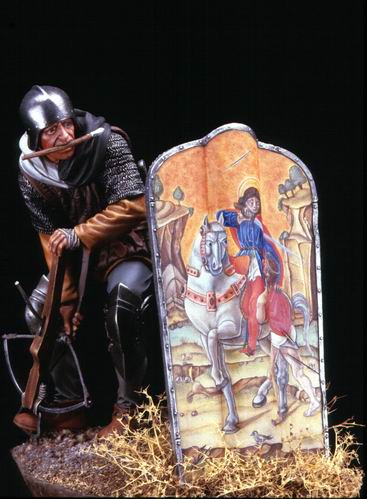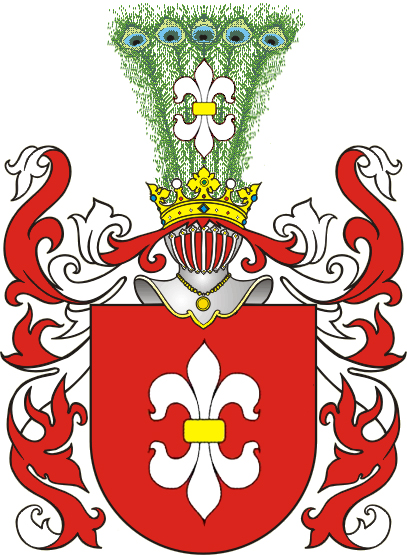|
Herburt Coat Of Arms
Herburt is a Polish coat of arms. It was used by several distinct and unrelated szlachta families such as the Pawcz family of Ruthenian Galicia. A coat of arms is an individual or family heirloom the origins of which lie in the 12th century. History Blazon Notable bearers Notable bearers of this coat of arms include: * Jan Herburt (Arłamowski) * Fryderyk Herburt * Jan Paweł Woronicz * Jan Szczęsny Herburt * Mikołaj Herburt * Mikołaj Herburt Odnowski * Piotr Herburt * Stanisław Herburt * Szymon Konarski ps. Janusz Hejbowicz Gallery Image:Jan herburt 1538.jpg, Portrait of Jan Herburt, Polish humanist, castellan of Sanok and elder of Przemyśl, (1524-1578) image:POL Felsztyn COA XIX w.svg, Coat of arms of Felsztyn, 16th century image:Coat of Arms of Dobromyl.svg, Coat of arms of Dobromil, 17th century image:POL Felsztyn COA.svg, Coat of arms of Felsztyn, 16th century image:CoA of Bohušov.svg, Coat of arms of Bohušov See also * Polish heraldry * Heraldic fami ... [...More Info...] [...Related Items...] OR: [Wikipedia] [Google] [Baidu] |
Pavise
A (or ) was an oblong shield used during the late 14th to early 16th centuries. Often large enough to cover the entire body, it was used by archers, crossbowmen, and other infantry soldiers. Etymology The name comes from the city of Pavia, Italy. Historical predecessors The concept of using a shield to cover an archer dates to at least the writing of Homer's ''Iliad'', where Ajax used his shield to cover his half-brother Teucer, an archer, who would "peer round" and shoot arrows. Similar large shields made of wicker were used by Achaemenid sparabara infantry. Description and history Of European origin, the pavise was large, square and convex. A smaller version for hand-to-hand combat and for wearing on the backs of men-at-arms was also made. The pavise is characterized by its prominent central ridge. The pavise was primarily used by archers and crossbowmen in the Middle Ages, particularly during sieges. It was carried by a , usually an archer, or, especially for the larger o ... [...More Info...] [...Related Items...] OR: [Wikipedia] [Google] [Baidu] |
Heraldic Family
A heraldic clan (''ród herbowy''), in Poland, comprised all the noble (''szlachta'') bearers of the same coat of arms. The members of a heraldic clan were not necessarily linked by consanguinity. The concept was unique to Polish heraldry. History The Polish word ''herb'' derives from the German ''Erbe'', "inheritance" or "heritage", and denotes a coat of arms. Unrelated families could be granted the same coat of arms and thus become co-armigers sharing the same ''herb''. Bearers of the same coat of arms were variously called ''herbowni'', ''współherbowni'' (co-armorials), or ''klejnotni'', from ''klejnot'', "jewel". The numbers of such individual families often reached several dozen; several hundred were not uncommon. The heraldic-family tradition constitutes one of the hypotheses about the origins of the Polish nobility: the unique feature of Polish heraldry being the practice of inducting unrelated families into the same coat of arms, sometimes with minor variations of ... [...More Info...] [...Related Items...] OR: [Wikipedia] [Google] [Baidu] |
Bohušov
Bohušov (until 1950 Fulštejn; german: Füllstein) is a municipality and village in Bruntál District in the Moravian-Silesian Region of the Czech Republic. It has about 400 inhabitants. Administrative parts Villages of Dolní Povelice, Karlov and Ostrá Hora are administrative parts of Bohušov. Geography Bohušov lies about northeast of Bruntál. The municipality is located on the border with Poland in the Osoblažsko microregion. Bohušov is situated in the Opawskie Mountains, Zlatohorská Highlands. The highest point in the territory is the hill V Pekle with an elevation of . The Osobloga, Osoblaha River flows across the municipality. There are several ponds, the largest of them are Bohušovský and Pod hradem. History The first written mention of Bohušov is from 1255. It was one of the settlements that were founded in the area shortly before at the initiative of the bishop Bruno von Schauenburg. The area was then settled by German colonizers. Knight Herbort of Fulme had ... [...More Info...] [...Related Items...] OR: [Wikipedia] [Google] [Baidu] |
Dobromyl
Dobrómyl’ ( ua, Добро́миль, links=no, pl, Dobromil, links=no) is a city in Sambir Raion, Lviv Oblast, Ukraine. It is located some 5 kilometers from the border with Poland. It hosts the administration of Dobromyl urban hromada, one of the hromadas of Ukraine. Population: . History Dobromyl was first mentioned in 1374, as a settlement founded by the Herburt family, upon request of Polish prince Władysław Opolczyk. In 1566 it was granted Magdeburg rights by the King Sigismund I the Old. Eighteen years later, Stanislaw Herburt built a castle here, the town also had a printing shop, where in 1612 the ''Annales seu cronici incliti regni Poloniae'' (The Annals of Jan Długosz) were published. Until the Partitions of Poland (1772), Dobromil was part of Przemyśl Land, Ruthenian Voivodeship. In the course of time, the branch of the Herburt family which resided in the town changed its name into Dobromilski. In 1772, Dobromil was annexed by the Habsburg Empire, and until ... [...More Info...] [...Related Items...] OR: [Wikipedia] [Google] [Baidu] |
Przemyśl
Przemyśl (; yi, פשעמישל, Pshemishl; uk, Перемишль, Peremyshl; german: Premissel) is a city in southeastern Poland with 58,721 inhabitants, as of December 2021. In 1999, it became part of the Subcarpathian Voivodeship; it was previously the capital of Przemyśl Voivodeship. Przemyśl owes its long and rich history to the advantages of its geographic location. The city lies in an area connecting mountains and lowlands known as the Przemyśl Gate (Brama Przemyska), with open lines of transportation, and fertile soil. It also lies on the navigable San River. Important trade routes that connect Central Europe from Przemyśl ensure the city's importance. The Old Town of Przemyśl is listed as a Historic Monument of Poland. Names Different names in various languages have identified the city throughout its history. Selected languages include: cz, Přemyšl; german: Premissel, Prömsel, Premslen; la, Premislia; uk, Перемишль (Peremyshlj) and (Pshemyslj); ... [...More Info...] [...Related Items...] OR: [Wikipedia] [Google] [Baidu] |
Sanok
Sanok (in full the Royal Free City of Sanok — pl, Królewskie Wolne Miasto Sanok, rue, Санок, ''Sanok'', ua, Cянік, ''Sianik'', la, Sanocum, yi, סאניק, ''Sonik'') is a town in the Subcarpathian Voivodeship of south-eastern Poland with 38,397 inhabitants, as of June 2016. Located on the San River and around 52 km south of Przemyśl, Sanok lies directly by the Carpathian Mountains. Once settled by Poles, Jews and Lemkos, the town's history goes back almost 1000 years when it was part of a medieval trade route. The Museum of Folk Architecture as well as the refurbished Sanok Castle and Old Town are popular points of interest. The region also features a 70 km trail for hikers and cyclists. Geography The city of Sanok is the capital of Sanok County in the Subcarpathian Voivodeship in Poland. Previously, it was in the Krosno Voivodeship (1975–1998) and in the Ruthenian Voivodeship (1340–1772), which was part of the Red Ruthenia region, and in wid ... [...More Info...] [...Related Items...] OR: [Wikipedia] [Google] [Baidu] |
Szymon Konarski
Szymon Konarski (1808–1839) was a 19th-century Polish- Lithuanian radical democratic politician and revolutionary, one of the leaders of the November Uprising of 1831. As a politician, he supported the radical idea of social and economic equality for all men, as well as the right of political and national liberty and self-governance. Konarski supported the idea of land reform in the form of parceling out aristocratic estates among the poor peasants, and opposed the clergy. Life Szymon Konarski was born on 5 March 1808 in the village of (Dobkiszki), Duchy of Warsaw, to a Calvinist landowning family. The Konarskis originated from Konary in southern Poland and traced their lineage to the House of Griffin. His grandfather, Jerzy, was an officer in the Polish Crown Army and a justice of the peace in Kalwaria Zebrzydowska. His father, Jerzy Stanisław, was a justice of the peace, the owner of Dobkiszki and Buchnicki starosta. He served as a colonel in the Polish Army and was ... [...More Info...] [...Related Items...] OR: [Wikipedia] [Google] [Baidu] |
Jan Szczęsny Herburt
Jan Szczęsny Herburt (12 January 1567 – 31 December 1616) was a Poles, Polish political writer, diplomat and a member of the Polish Sejm parliament. An early supporter of Chancellor (Poland), Chancellor Jan Zamoyski, he took part in many diplomatic missions, most notably to Sweden, United Kingdom, Vatican City, the Vatican and the Ottoman Empire. He supported the election of King Sigismund III of Poland to the throne, but then became his adversary and joined the leaders of the infamous Zebrzydowski Rebellion in 1607. As a rebel, he was imprisoned by royalists from 1607 to 1609. Herburt was an author of many rebellion-related and anti-magnate treaties. He was also a founder of the Kudryntsi Castle. Jan Szczęsny Herburt hailed from a Polonized German-Ruthenian family.Dziuba, O. Jan Szczęsny Herburt (ГЕРБУРТ ЯН-ЩАСНИЙ)'. Encyclopedia of History of Ukraine. 2004 Himself a Roman Catholic, he opposed the Union of Brest and attempted to protect the Eastern Orthodox ... [...More Info...] [...Related Items...] OR: [Wikipedia] [Google] [Baidu] |
Coat Of Arms
A coat of arms is a heraldry, heraldic communication design, visual design on an escutcheon (heraldry), escutcheon (i.e., shield), surcoat, or tabard (the latter two being outer garments). The coat of arms on an escutcheon forms the central element of the full achievement (heraldry), heraldic achievement, which in its whole consists of a shield, supporters, a crest (heraldry), crest, and a motto. A coat of arms is traditionally unique to an individual person, family, state, organization, school or corporation. The term itself of 'coat of arms' describing in modern times just the heraldic design, originates from the description of the entire medieval chainmail 'surcoat' garment used in combat or preparation for the latter. Roll of arms, Rolls of arms are collections of many coats of arms, and since the early Modern Age centuries, they have been a source of information for public showing and tracing the membership of a nobility, noble family, and therefore its genealogy across tim ... [...More Info...] [...Related Items...] OR: [Wikipedia] [Google] [Baidu] |
Westphalia
Westphalia (; german: Westfalen ; nds, Westfalen ) is a region of northwestern Germany and one of the three historic parts of the state of North Rhine-Westphalia. It has an area of and 7.9 million inhabitants. The territory of the region is almost identical with the historic Province of Westphalia, which was a part of the Kingdom of Prussia from 1815 to 1918 and the Free State of Prussia from 1918 to 1946. In 1946, Westphalia merged with North Rhine, another former part of Prussia, to form the newly created state of North Rhine-Westphalia. In 1947, the state with its two historic parts was joined by a third one: Lippe, a former principality and free state. The seventeen districts and nine independent cities of Westphalia and the single district of Lippe are members of the Westphalia-Lippe Regional Association (''Landschaftsverband Westfalen-Lippe''). Previous to the formation of Westphalia as a province of Prussia and later state part of North Rhine-Westphalia, the ... [...More Info...] [...Related Items...] OR: [Wikipedia] [Google] [Baidu] |
Szlachta
The ''szlachta'' (Polish: endonym, Lithuanian: šlėkta) were the noble estate of the realm in the Kingdom of Poland, the Grand Duchy of Lithuania, and the Polish–Lithuanian Commonwealth who, as a class, had the dominating position in the state, exercising extensive political rights and power. Szlachta as a class differed significantly from the feudal nobility of Western Europe. The estate was officially abolished in 1921 by the March Constitution."Szlachta. Szlachta w Polsce" ''Encyklopedia PWN'' The origins of the ''szlachta'' are obscure and the subject of several theories. Traditionally, its members owned land (allods), [...More Info...] [...Related Items...] OR: [Wikipedia] [Google] [Baidu] |





